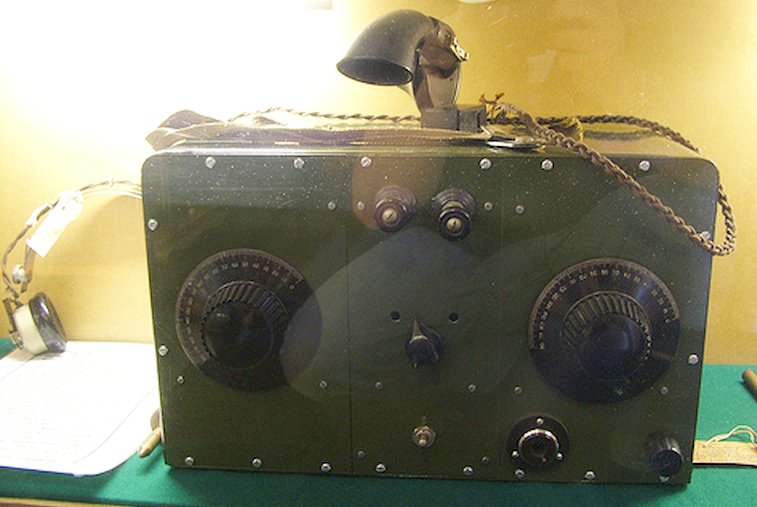Men who were recruited were initially based at Bachelors Hall, Hundon, Suffolk and tasked with designing and manufacturing a small radio telephony set that was simple to use, able to withstand damp conditions, and operating on high frequency over a short distance of 10-20 miles.
The wireless set produced by the team was code-named TRD (transmitter/receiver and, coincidentally using the initials of Ron Dabbs), was housed in a metal case about 15in. long, 9 3/8in. wide, and 9¼in. high. It was powered by a large conventional 6-volt 85 A.H. accumulator battery, the voltage being boosted by the vibrator in the set to 240 volts, with a power output of approximately 1½ watt. The frequency range was 48-65 mcs, then rarely used but now commonly used by BBC1 television. After extensive tests a sum of £2,000 was allocated for the purchase of parts, which generally were obtained from commercial companies.
The set’s metal case was constructed by the Metalbox Company of North London. The back and sides came in one piece and access to the components was by removing the front panel with the attached component chassis. The transmitters were TVO/31Os or RK34s, twin triodes, and were used in a se1f-excited configuration, having a coil across the two grids, while the anodes were connected to a coil between them. The anodes were fed by a centre tap on the anode coil. A RF choke and capacitor were connected to the HT supply, which was supplied by the vibrator pack, using mainly a 4-pin vibrator and an OZ4 cold cathode rectifier and producing around 250 volts DC. Occasionally the vibrator was a self-synchronous 6-pin type which produced the DC without a rectifier. These were fed by a transformer, all contained in a Masteradio vibrator pack made by the Masteradio factory in Rickmansworth Road, Watford, Hertfordshire. The self-excited oscillators were anode modulated by a 6V6 fed by a 6C5, both metal valves of the octal variety, as were the OZ4s. The aerial terminals inside the front panel were connected inside via a piece of flat twin feeder, ending in a single-turn loop the same diameter as the coil and pushed in between the turns at the low impedance point at the centre tap at which point the HT was fed via an RF choke with a value of 2.5 mille-henries. Outside the front panel, the aerial terminals were connected to a 72-ohm flat twin feeder leading to the dipole antenna hidden in a tree. The microphone was an ordinary GPO telephone handset. The receiver was a super-regenerative type and, although very sensitive, had to be isolated from the radiation caused (and thereby giving away the position to the enemy) by the simple means of using an untuned buffer RF amplifier, which was an EF50, a popular valve at the time with tiny pins. The super-regenerative valve was a Mullard Red 'E' type EF39. The output was via a 6V6 tetrode and could be via either a loudspeaker or headphones. The number of sets in use at stand-down is documented to have been 250 TRDs, 28 TRMs, 36 TRFs, and 200 No. 17 sets.
Most of the info on this page has been written by Arthur Gabbitas.
